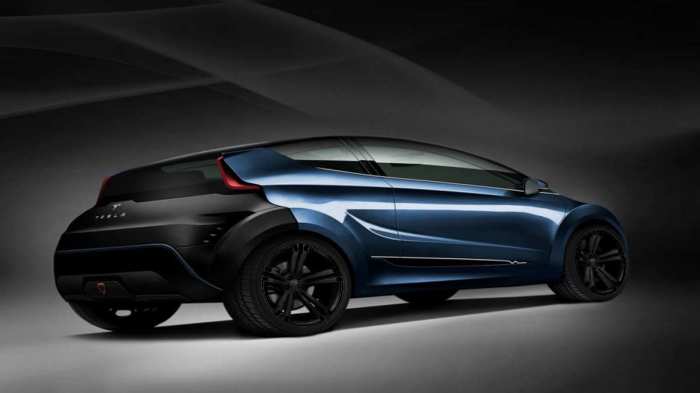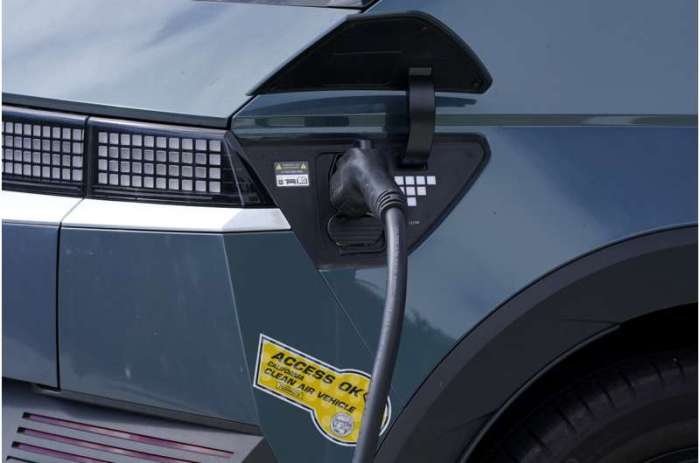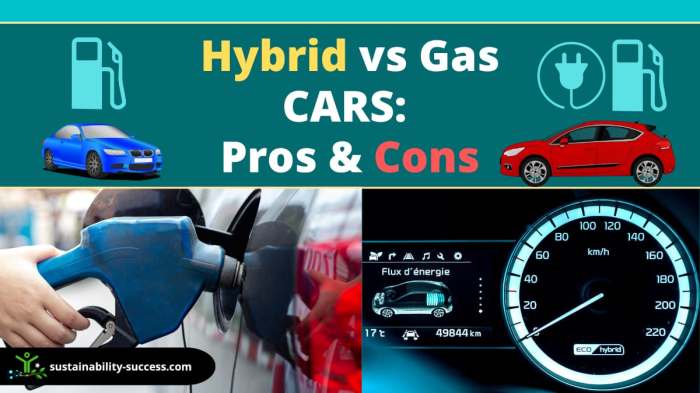Will gas cars be phased out by 2030? It’s a question burning up the automotive industry and sparking heated debates everywhere from college campuses to Capitol Hill. The push for electric vehicles (EVs) is gaining serious momentum, driven by ambitious government targets, rapidly advancing EV technology, and a growing consumer demand for eco-friendly options. But is a complete gas car phase-out by 2030 realistic?
This deep dive explores the complex factors shaping the future of transportation.
We’ll examine government regulations in major markets like the EU, US, and China, looking at the carrots and sticks used to incentivize EV adoption. Then, we’ll dive into the technological hurdles – battery range, charging infrastructure, and the overall cost-effectiveness of EVs compared to their gas-guzzling counterparts. Finally, we’ll consider the economic and environmental implications of this massive shift, from its impact on the oil industry to its role in combating climate change.
Get ready for a wild ride!
Government Regulations and Policies: Will Gas Cars Be Phased Out By 2030?

The push towards phasing out gas cars by 2030 is heavily reliant on government intervention. Stringent regulations, financial incentives, and infrastructure development are all crucial components of this transition. The speed and success of this shift will depend significantly on the policies enacted and enforced by major automotive markets worldwide.Current regulations and incentives vary widely across different countries, creating a complex and dynamic landscape.
While some regions are aggressively pushing for electrification, others are adopting a more gradual approach. This disparity impacts the overall timeline for achieving a gas car phase-out.
Gas Car Regulations and Incentives in Major Markets
The following table summarizes the current policies in the EU, US, and China. It’s important to note that these policies are constantly evolving, and specific details may change. This table represents a snapshot in time and should be considered a starting point for further research.
| Region | Deadline for New Gas Car Sales | EV Purchase Incentives | Infrastructure Investment |
|---|---|---|---|
| European Union | Many member states aim for bans by 2035, with some earlier targets. The exact timeline varies by country and vehicle type. | Varying subsidies and tax breaks offered at the national level. Incentives often depend on vehicle range and battery size. | Significant investments in charging infrastructure are underway, but the extent varies across member states. |
| United States | No nationwide ban currently exists. Several states have adopted their own targets, but these are generally later than 2035. The federal government is providing incentives but lacks a comprehensive national ban. | Federal tax credits are available for EV purchases, along with state-level incentives. These credits often have income limits and phase-out provisions. | Federal funding is being allocated for the expansion of the EV charging network, but significant gaps remain. |
| China | No nationwide ban on new gas car sales has been officially announced, although various cities and provinces are implementing their own regulations. The focus is on promoting domestic EV manufacturers and increasing domestic production. | Subsidies and tax breaks are offered for EV purchases, but the level of support has fluctuated in recent years. | China has made significant investments in building out its EV charging infrastructure, particularly in urban areas. |
Impact of Future Policy Changes
Future policy changes could significantly alter the timeline for phasing out gas cars. For example, stricter emission standards, increased fuel efficiency requirements, or even outright bans on the sale of new internal combustion engine vehicles could dramatically accelerate the transition. Conversely, a relaxation of existing regulations or a reduction in financial incentives could slow down the process. The level of government support for charging infrastructure is also crucial; a lack of readily available charging stations will significantly hinder EV adoption.
Changes in international trade agreements and tariffs could also impact the affordability and availability of EVs.
Whether gas cars will be phased out by 2030 is a huge question, depending a lot on battery tech advancements. A big part of that is the development of better, safer batteries, like those discussed in this article on Solid-state batteries in EVs 2025. If solid-state batteries become mainstream soon, it could definitely speed up the transition away from gasoline, making a 2030 deadline more realistic.
Lobbying Efforts and Stakeholder Influence
The automotive industry, environmental groups, and other stakeholders are actively involved in lobbying efforts that influence government policies. Automakers, particularly those with significant investments in internal combustion engine technology, often lobby for more gradual transitions or less stringent regulations. In contrast, environmental groups typically advocate for more aggressive policies to accelerate the shift to electric vehicles. Consumer advocacy groups also play a role, pushing for policies that protect consumers and ensure a fair transition.
These competing interests create a dynamic and often contentious political landscape that shapes the future of automotive regulations.
Technological Advancements in Electric Vehicles
The rapid shift towards electric vehicles (EVs) is heavily reliant on continuous advancements in battery technology, charging infrastructure, and overall vehicle performance. These improvements are crucial for overcoming current limitations and making EVs a truly viable alternative to gasoline-powered cars. The progress made in recent years is significant, but challenges remain.
The automotive industry is engaged in a constant race to improve electric vehicle technology, focusing primarily on range, charging speed, and affordability. These factors directly influence consumer adoption and the overall success of the EV transition.
Battery Technology Advancements
Significant strides have been made in battery technology, impacting range, charging times, and cost. These advancements are crucial for addressing consumer concerns about range anxiety and the overall practicality of EVs.
- Increased Energy Density: Newer battery chemistries, such as solid-state batteries and improved lithium-ion designs, are achieving higher energy density. This translates to longer driving ranges on a single charge. For example, some high-end EVs now boast ranges exceeding 400 miles.
- Faster Charging Times: Advancements in battery management systems and charging technologies are enabling faster charging speeds. The introduction of 800-volt architectures and ultra-fast charging stations allows for significant reductions in charging time, making long journeys more feasible.
- Reduced Battery Cost: Economies of scale in battery production and ongoing research into cheaper materials are gradually lowering the cost of EV batteries. This is a key factor in making EVs more affordable and competitive with gasoline cars.
- Improved Battery Lifespan: Research is focused on extending the lifespan of EV batteries, reducing the need for frequent and costly replacements. This contributes to the long-term cost-effectiveness of owning an EV.
Charging Infrastructure Development
The availability and speed of charging infrastructure are vital for widespread EV adoption. A robust network of public charging stations is essential to alleviate range anxiety and encourage long-distance travel in EVs.
| Charging Type | Charging Speed | Power (kW) | Charging Time (Example for 80% charge) |
|---|---|---|---|
| Level 1 (AC) | Slow | 1.9-3.7 | 12-24 hours |
| Level 2 (AC) | Moderate | 7-22 | 3-12 hours |
| DC Fast Charging | Fast | 50-350+ | 20-60 minutes |
| Ultra-Fast Charging | Very Fast | 350+ | 10-20 minutes |
EV vs. Gasoline Vehicle Performance and Cost-Effectiveness
Comparing EVs and gasoline vehicles requires considering several factors, including purchase price, running costs, performance, and environmental impact. While initial purchase prices of EVs might be higher, long-term cost savings can be substantial.
In terms of performance, EVs often offer quicker acceleration and a smoother driving experience. However, gasoline vehicles typically have a longer range and faster refueling times. Running costs for EVs are generally lower due to cheaper electricity compared to gasoline and reduced maintenance requirements (fewer moving parts).
The environmental impact is a key differentiator. EVs produce zero tailpipe emissions, contributing to cleaner air and a reduced carbon footprint. However, the manufacturing process and electricity generation for charging can still have environmental consequences. The overall impact depends on the source of electricity used for charging and the lifecycle assessment of both vehicle types.
Consumer Adoption and Market Trends
The shift towards electric vehicles (EVs) isn’t just about government policy or technological leaps; it hinges on consumers embracing this new technology. Understanding consumer behavior, preferences, and the hurdles they face is crucial to predicting the future of the automotive landscape. This section will explore the current market trends, identifying key factors influencing EV adoption rates and the challenges that remain.Consumer purchasing patterns reveal a growing, yet still limited, acceptance of electric vehicles.
While the initial market was driven by early adopters and environmentally conscious individuals, recent years have seen a broadening of the consumer base. However, significant barriers still exist that prevent widespread adoption.
So, will gas cars be completely gone by 2030? It’s a huge question, and the answer’s complicated. A big part of the shift depends on the rapid advancement of EV technology, like the awesome autonomous driving features in 2025 EVs, which you can check out here: Autonomous driving features in 2025 EVs. These advancements will definitely influence how quickly people switch over, impacting whether we see a complete phase-out of gas cars by that deadline.
Electric Vehicle Market Share Growth
A hypothetical bar chart illustrating EV market share growth from 2015 to 2025 would show a clear upward trend, though not a uniformly steep one. The chart would have years (2015, 2016, 2017, 2018, 2019, 2020, 2021, 2022, 2023, 2024, 2025) on the horizontal axis and market share percentage (from 0% to, say, 25%) on the vertical axis. The bars representing market share would be relatively short in the early years (2015-2017), showing only a few percentage points.
The height of the bars would gradually increase each year, becoming significantly taller by 2020 and beyond. While the growth is positive, the bars would not reach the 25% mark by 2025, indicating that significant room for expansion remains. This visual representation would clearly demonstrate the increasing, but still relatively small, share of EVs in the overall vehicle market.
Barriers to Wider EV Adoption
Several key factors impede the broader adoption of electric vehicles. High upfront purchase prices compared to gasoline-powered vehicles remain a significant obstacle for many potential buyers. Range anxiety, the fear of running out of battery charge before reaching a charging station, continues to be a concern, especially for long-distance drivers. The limited availability and uneven distribution of charging infrastructure, particularly outside of major urban areas, further exacerbate this issue.
Finally, the longer refueling times compared to gasoline cars, while improving, still pose a barrier for some consumers accustomed to quick fill-ups.
Influence of Marketing and Public Perception
Marketing plays a crucial role in shaping public perception and influencing consumer choices. Positive marketing campaigns highlighting the environmental benefits, technological advancements, and cost savings (in the long run) of EVs can significantly boost consumer confidence and encourage adoption. Conversely, negative publicity surrounding issues like battery range, charging infrastructure limitations, or high initial costs can deter potential buyers.
The overall narrative surrounding EVs – whether presented as a cutting-edge, eco-friendly solution or a costly, inconvenient alternative – profoundly affects consumer decisions. For example, Tesla’s successful marketing strategy has positioned their vehicles as desirable and high-tech, contributing significantly to their market share. Conversely, negative news coverage of EV fires or range limitations can create uncertainty and hinder adoption.
Economic and Infrastructure Considerations

A rapid shift away from gasoline-powered vehicles by 2030 presents significant economic and infrastructural challenges and opportunities. The transition will necessitate substantial investments and adjustments across various sectors, impacting employment, energy production, and the overall economy. Understanding these implications is crucial for policymakers and businesses alike to navigate this transformation effectively.The economic impact of phasing out gas cars will be felt across multiple industries.
The oil and gas industry, for instance, faces a potential decline in demand for gasoline and diesel, leading to job losses and potentially impacting related sectors like petrochemicals. Conversely, the automotive manufacturing industry will undergo a significant restructuring, requiring substantial investment in electric vehicle (EV) production facilities and the retraining of workers. This transition could lead to job creation in the EV sector, but also potential displacement in traditional automotive manufacturing roles if not managed effectively.
The overall effect on employment will depend heavily on the speed of the transition and the effectiveness of government policies aimed at mitigating job losses and fostering new job creation.
Economic Impacts on Various Industries
The shift to EVs will dramatically alter the economic landscape. The oil industry, a cornerstone of many economies, will see reduced demand for its primary product, leading to potential downsizing and restructuring. This could trigger ripple effects throughout the industry, impacting related jobs in refining, distribution, and even exploration. Meanwhile, the automotive sector will experience a massive transformation.
Companies will need to invest heavily in research and development, manufacturing facilities, and supply chains geared toward EVs. This could lead to significant job creation in areas like battery production, electric motor manufacturing, and software development, but it also risks job losses in traditional internal combustion engine (ICE) manufacturing if retraining and adaptation measures are insufficient. For example, the recent closure of several ICE engine manufacturing plants highlights the immediate challenges of this transition.
Government intervention, such as retraining programs and incentives for investment in the EV sector, will be crucial in mitigating negative economic impacts and fostering a smooth transition.
Necessary Infrastructure Upgrades
The widespread adoption of EVs necessitates significant infrastructure upgrades to support the increased demand for electricity and charging facilities. This is not merely a matter of adding charging stations; it requires a holistic approach encompassing several key areas:
- Electricity Grid Capacity: A substantial increase in electricity generation capacity is needed to handle the surge in demand from EV charging. This requires investment in renewable energy sources like solar and wind power, as well as upgrades to the transmission and distribution networks to ensure reliable power delivery. Existing grids in many areas may struggle to handle a massive influx of EV charging demand simultaneously, leading to potential brownouts or blackouts if not upgraded appropriately.
This is especially relevant in areas with limited grid capacity, requiring targeted investments.
- Charging Station Deployment: A widespread network of public charging stations is essential, particularly along major highways and in urban areas. This requires significant investment in charging infrastructure, including fast-charging stations to address range anxiety concerns. The location and type of chargers (Level 2 vs. DC fast charging) need careful planning to meet diverse needs.
- Smart Grid Technologies: Implementing smart grid technologies will optimize electricity distribution and manage peak demand more effectively. This can help mitigate the strain on the grid caused by widespread EV charging. Smart grids allow for dynamic pricing and demand response programs, which can incentivize EV owners to charge their vehicles during off-peak hours, reducing strain on the grid during peak demand periods.
- Grid Modernization: Many existing grids are outdated and not designed to handle the increased load from widespread EV adoption. Modernization projects, including upgrading transformers and transmission lines, are crucial to ensure grid stability and reliability. Without sufficient modernization, the grid could become overwhelmed, leading to power outages and hindering EV adoption.
Job Creation and Economic Growth in Renewable Energy and Electric Vehicle Sectors
The transition to EVs presents a significant opportunity for job creation and economic growth in the renewable energy and EV sectors. The increased demand for electricity will drive investment in renewable energy sources, creating jobs in manufacturing, installation, and maintenance. The EV industry itself will create jobs in manufacturing, research and development, sales, and service. For example, battery manufacturing alone is projected to create hundreds of thousands of jobs globally in the coming decades.
Furthermore, the development and deployment of charging infrastructure will generate jobs in construction, engineering, and maintenance. However, it’s crucial to ensure that these new jobs are accessible and well-paying, requiring investment in education and training programs to equip workers with the necessary skills. This transition offers the potential to create a more sustainable and resilient economy, provided that policies are implemented to facilitate a just and equitable transition for all workers.
Environmental Impact and Sustainability

The shift towards electric vehicles (EVs) is driven not only by technological advancements and government policies but also by a crucial need for environmental sustainability. A comprehensive comparison of the environmental impact of gasoline-powered vehicles and EVs across their entire lifecycles reveals a complex picture, highlighting both advantages and challenges.The environmental impact of both gasoline and electric vehicles is multifaceted, encompassing manufacturing, use, and disposal.
While EVs offer significant advantages in reducing tailpipe emissions, the environmental burden associated with battery production and disposal remains a significant consideration. A thorough life-cycle assessment is necessary to understand the overall environmental footprint of each vehicle type.
Life-Cycle Environmental Comparison of Gasoline and Electric Vehicles
The table below summarizes key environmental factors across the lifecycle of gasoline and electric vehicles. It’s important to note that these figures can vary based on factors like manufacturing processes, electricity sources, and vehicle models.
| Environmental Factor | Gasoline Vehicle | Electric Vehicle | Notes |
|---|---|---|---|
| Greenhouse Gas Emissions (GHG) | High, primarily CO2 from fuel combustion | Lower during use (depending on electricity source), higher during manufacturing | EVs produce zero tailpipe emissions, but electricity generation can still produce GHGs. |
| Air Pollution | High, including particulate matter, NOx, and other pollutants | Lower during use, but potential for pollution from battery manufacturing | Gasoline vehicles contribute significantly to urban air pollution. |
| Resource Depletion | High demand for oil, a finite resource | High demand for rare earth minerals and other materials for batteries | Both vehicle types rely on significant resource extraction. |
| Land Use | Oil extraction and refining impact land use | Mining for battery materials impacts land use | Both processes have significant environmental footprints. |
| Water Use | Significant water consumption in oil extraction and refining | Significant water consumption in battery manufacturing | Water scarcity is a growing concern in both industries. |
The Role of Electric Vehicles in Reducing Greenhouse Gas Emissions
Electric vehicles play a crucial role in mitigating climate change by significantly reducing greenhouse gas emissions compared to gasoline-powered vehicles. The extent of this reduction depends on the source of electricity used to charge the EVs. If electricity comes from renewable sources like solar or wind power, the emissions reduction is maximized. Even with electricity generated from fossil fuels, EVs generally produce fewer GHG emissions over their lifetime than gasoline vehicles, particularly in regions with a high proportion of renewable energy sources in the electricity grid.
For example, studies by organizations like the EPA have consistently shown a lower carbon footprint for EVs compared to their gasoline counterparts, particularly when considering the vehicle’s entire life cycle.
Environmental Implications of Battery Production and Disposal, Will gas cars be phased out by 2030?
The production and disposal of EV batteries present significant environmental challenges. Battery manufacturing requires large quantities of energy and water, and the mining of materials like lithium, cobalt, and nickel can have substantial environmental and social impacts, including habitat destruction and potential for pollution. The disposal of spent batteries also poses environmental risks if not managed properly, due to the potential for leaching of heavy metals and other harmful substances into the environment.
However, ongoing research and development are focusing on improving battery recycling technologies and developing more sustainable battery chemistries to mitigate these environmental concerns. The development of closed-loop battery recycling systems is crucial for minimizing the environmental impact of battery disposal.
Ending Remarks
So, will gas cars be a relic of the past by 2030? The answer isn’t a simple yes or no. While the transition to electric vehicles is undeniably accelerating, a complete phase-out by 2030 faces significant challenges. The interplay between government policy, technological advancements, consumer behavior, economic factors, and environmental concerns will ultimately determine the pace of this transformation.
One thing’s for sure: the future of driving is electric, but the timeline remains a subject of ongoing debate and rapid change.









